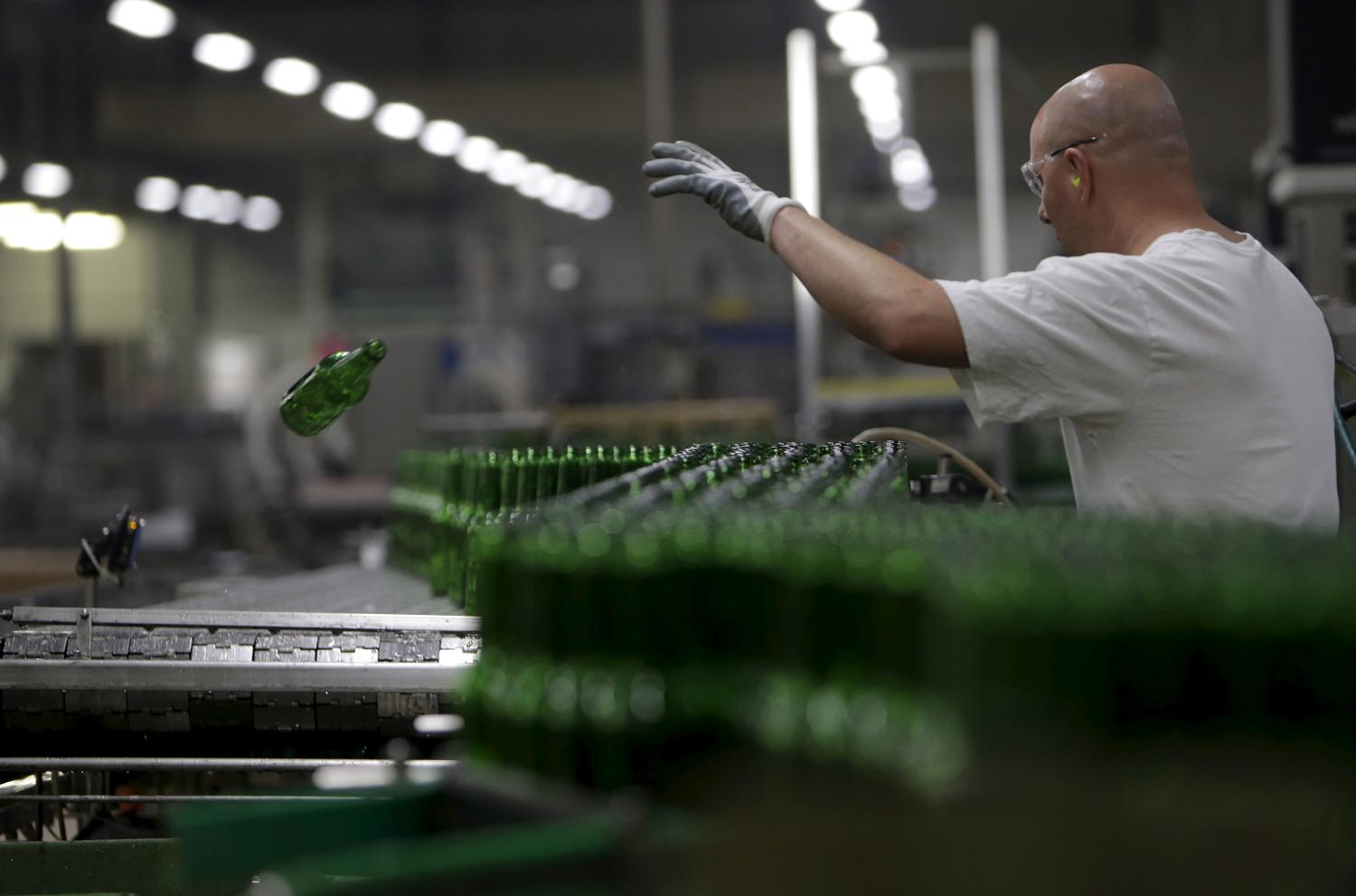The Republican tax bill includes deep cuts to alcohol excise taxes that are widely described as benefiting small “craft” brewers and distillers. In fact, most of the tax cuts go not to the little guys, but to big producers.
According to the Joint Committee on Taxation, these tax cuts, which are rolled up in a part of the bill called the “Craft Beverage Modernization and Tax Reform Act,” reduce total alcohol revenues by $4.2 billion over the two years they are in effect, a cut equal to about 20 percent of total alcohol excise tax revenues in those years.
The frequent assertion that the tax cut is for craft brewers and distillers is misleading.
- For every $20 of alcohol tax cuts in the legislation, only about $1 actually goes to the true craft brewers or small distillers.
- Most of the revenue—the other $19—goes to larger producers and to importers. This is largely because of new or expanded opportunities to evade or avoid the limits on what qualifies for the lowest tax rates. For instance, it’s plausible that a third to one half of all distilled spirits sold in the U.S. will qualify for the reduced rate.
- By allowing alcohol from foreign and large domestic producers to be passed off as “craft,” certain parts of the legislation may put America’s real small brewers and distillers at a competitive disadvantage.
The new law reduces the excise tax rate on the first 60,000 barrels of beer by 50 percent (from $7 to $3.50) no matter how small or large the brewer. It cuts the tax on the first 100,000 proof gallons of distilled spirits by 80 percent (from $13.50 to $2.70), and by 40 percent on the first 30,000 gallons of most wine (from $0.17 to $0.07 after the increased wine credit). Because these small producers are targeted with the biggest cuts, they must represent most of the revenue, right? Not true.
Small brewers (those producing less than 60,000 barrels) only produced 4.6 percent of all U.S.-made beer in 2016 (about 8 million barrels). And because they already benefited from a lower $7 per barrel tax, while most beer was taxed at $18/barrel, they accounted for only about $56 million in taxes or 1.5 percent of total beer tax revenues (including imports).1 Cutting their taxes in half should only cost about $28 million.
The story is similar for distilled spirits. Small producers that make less than 100,000 proof gallons per year represent only 1.5 percent of all domestic taxable distilled spirits production. Collectively, they paid about 1 percent of all taxes on distilled spirits in 2016—or about $61 million in excise taxes.2 Even with an 80 percent tax cut, that’s only $49 million.
The government does not produce comparable data for wine production, so it is not possible to calculate the exact share of taxes paid by this group. However, the wine industry is also highly concentrated, and small producers represent only a small fraction of total production and already benefit from a deeply reduced rate. Total domestic wine taxes were $768 million in 2016, so even under the generous assumption that small wine producers accounted for 5 percent of total revenues (and got a 40 percent cut) that would only be $23 million.
In other words, small producers can’t be the primary beneficiaries of a tax bill that reduces alcohol taxes by 20 percent when they only account for 1 to 2 percent of all alcohol excise taxes paid. Of the $2.1 billion in tax cuts, American craft producers are only getting roughly $100 million—about $1 for each $20 of tax cuts.
So where is all the money going? A small part is the fact that all producers (not just small producers) get a tax cut. The law also provides cuts for medium and large brewers. InBev and MolsonCoors, for instance, each get $12 million. Similarly, all spirits distillers get the reduced rate on the first 100,000 gallons they produce and a slightly lower rate reduction on the next 22,130,000 proof gallons. And all wine makers (not just small ones) are eligible for lower effective rates on up to 750,000 gallons of production. But even these deliberate cuts can explain only a small share of the total revenue loss.
Instead, most of the revenue reduction arises because of new opportunities to evade or avoid the tax by foreign or large domestic producers passing off their product as “craft.”
The biggest problem is that “producers” and not just “distillers” or “brewers” benefit from the deepest tax cuts. Despite the name, producers need not actually produce their own alcohol—they can purchase it from elsewhere and process it through activities like blending, mixing, flavoring, aging, or bottling. Not only does the new law allow this to qualify for the low rate, it makes it much easier. Under the new “simplifications,” the purchased alcohol or beer can now be transferred tax-free between unrelated producers. Beer can be brewed at one plant, shipped to another producer, and taxed only when sold—as craft—by the recipient producer. Previously, such transfers were generally limited to facilities with a common owner, or limited to transfers in bulk containers greater than a gallon. However, in the new system, the industrial producer can now bottle and label it before shipping.
In other words, under the new law, you can be a craft producer without having to brew any beer, distill any spirits, or even put anything in a bottle.
To give a concrete example: Under the new law, you can purchase alcohol from an industrial producer and have them label, bottle, and ship it to you “in bond” (without paying tax). Then, by processing it (perhaps by aging it in the bottle? Or exposing it to a refreshingly low temperature?), you qualify as a “craft producer” and pay tax at the 80 percent reduced rate. It’s hard to know how prevalent this activity will be, but it’s already a commonplace. My guess is that somewhere between a third and a half of all distilled spirits is actually produced by the largest industrial distillers, but designated as craft by small processers. Just about all of that would qualify for the 80 percent lower rate, which by itself would account for more than a billion in revenue loss each year.
Another problem is that the new law allows foreign producers to benefit from the low rates on small producers. However, there is no way to enforce that provision for importers, meaning that many will represent themselves as “craft” producers even if they’re not. While the U.S. Treasury’s Alcohol, Trade, Tobacco Bureau (TTB) regularly inspects and monitors alcohol production in the U.S., there is no such authority to, say, fly to France and monitor foreign production. And without such checks, U.S. Customs will have to take the importer’s word for it. Almost a third of distilled spirits is imported, and the importers would have a strong incentive to claim the lowest rate. Customs will have little ability to stop them.
Finally, there are many new loopholes because of “simplifications” in transfers between producers. For instance, all distillers get the 80 percent lower rate on distilled spirits on the first 100,000 gallons, but they can now ship their alcohol to different producers or different warehouses “in bond” without paying the tax, leaving the tax to be paid only when it leaves the recipient’s warehouse. A producer making a million proof gallons might ship it out to 10 other producers, and each might claim (legally or not) that their 100,000 gallons qualified for the 80 percent lower rate. With multiple tax rates on otherwise identical commodities, from multiple years of production, transferred among multiple producers, the ability to properly measure and collect the tax will be significantly impaired. TTB’s small staff will not have the ability or resources to monitor or enforce such a complicated new system.
The revenue effects of these unintended changes are substantial. Little of the money goes to true craft producers—indeed, most will go to their larger competitors. And as I wrote previously, the public health consequence of a 20 percent cut in alcohol taxes—mostly from distilled spirits—is likely to be profound.
-
Footnotes
- Brewers producing less than 60,000 barrels brewed a total of 8 million barrels in 2016. At a tax rate of $7 per barrel, that equals $56 million in revenue. Total beer taxes in 2016 were $3.6 billion.
- Distilleries producing less than 100,000 gallons produced an aggregate of 4.5 million proof gallons of spirits. At a tax rate of $13.50 per gallon, that is $60.8 million. Total distilled spirits taxes in 2016 were $5.9 billion.





